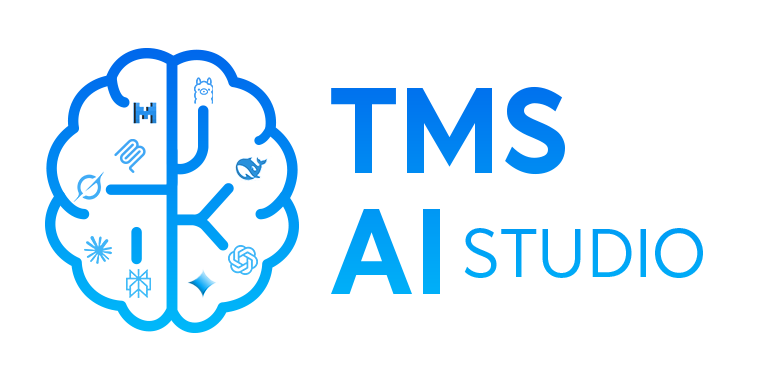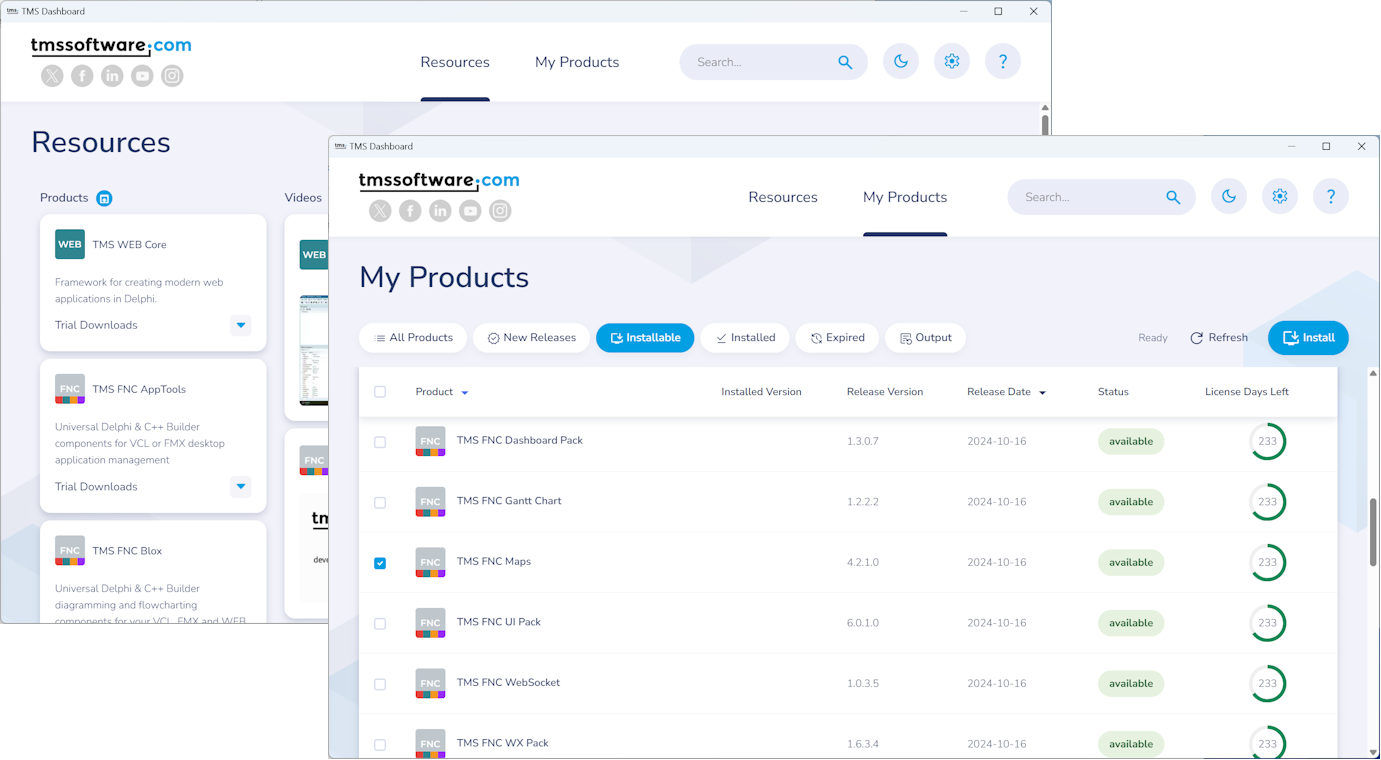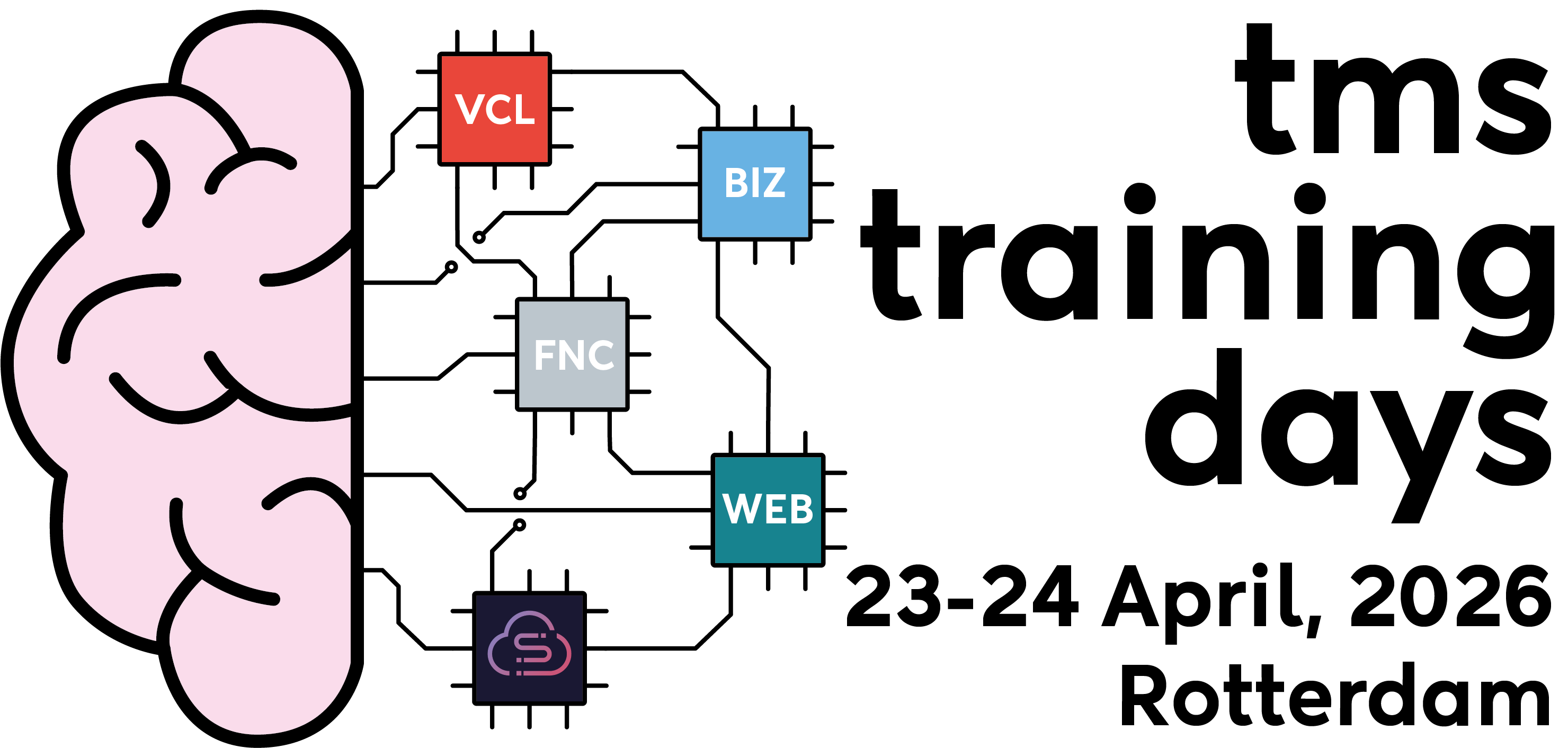Blog
All Blog Posts | Next Post | Previous Post

 TMS 2025 Wrapped
TMS 2025 Wrapped
Friday, December 26, 2025

What a year it’s been! As 2025 comes to an end, we can’t help but feel proud, grateful, and inspired. This year brought exciting new beginnings, major product releases, and countless moments that reminded us why we love building tools for developers around the world.
And yes — 2025 was a very special milestone for us: this summer, TMS Software officially joined the Legacies family! It’s a partnership built on shared values — innovation, trust, and a deep respect for the software community. Together, we’ll continue to strengthen what we’ve built and shape the next great chapter in the TMS journey.
Let’s take a moment to rewind and celebrate everything we achieved together this year!
Expanding the TMS Product Family
This year, we introduced two new additions to our product lineup:
TMS AI Studio – Bringing the power of artificial intelligence to Delphi & C++Builder developers. With TMS AI Studio, you can seamlessly integrate AI capabilities such as natural language processing, text generation, and speech recognition directly into your applications.

TMS FNC Push Notifications – A new FNC component that lets you handle web and mobile push notifications in a cross-platform way. From browser notifications to app updates, engaging your users has never been easier.
Key Product Updates and Delphi 13 Support
2025 was also a year of continuous improvement across our existing product lines. All actively developed components received Delphi 13 support, ensuring seamless compatibility with the latest RAD Studio versions. You can find the full list of supported products here.
- 18 TMS VCL UI Pack releases
- 20 TMS WEB Core releases
- 31 TMS FNC UI Pack releases
- 31 TMS FNC Core releases
- 14 TMS FNC Maps releases
- 26 TMS FNC Cloud Pack releases
- 13 TMS FNC WX Pack releases
- 15 TMS AI Studio releases
- 3 TMS Sphinx releases
- 3 TMS XData releases
Improving Your Download Experience
Your development flow matters to us. That’s why we made significant improvements to how you install and manage TMS Software:
- TMS Smart Setup went open source, giving developers more flexibility and control.
- The brand‑new TMS Dashboard offers a clear overview of all your products, downloads, and updates — all in one place.

The TMS Blog in 2025
Our blog has been buzzing with activity!
In 2025, we published 102 articles filled with technical insights, tutorials, and product news.
Most Popular Blog Posts of 2025:
- Introducing TMS FNC Push Notifications: Handle Web Push with Delphi! – 21,553 views
- Next Generation Data Grid for C++: Getting Started – 18,473 views
- What’s New in TMS BIZ – April 2025 Release – 17,664 views
- Next Generation Data Grid for Delphi: File Drag & Drop – 16,962 views
- Next Generation Data Grid for Delphi: Columns Editor – 16,812 views
- Freebie Friday: Next Generation Grid Quick Sample Data – 16,567 views
- Add AI Superpower to Your Delphi & C++Builder Apps (Part 1) – 16,174 views
- Introducing TMS WEB Core v2.8.0.0: AgGrid Integration & AI-Powered Web Design – 15,878 views
- Sneak Peek: The AI (r)evolution for and with Delphi – 15,514 views
- Introducing TMS AI Studio: Your Complete AI Development Toolkit for Delphi – 15,509 views
Webinars

We hosted four webinars this year, connecting hundreds of developers worldwide:
- The World of FNC – Webinar Replay
- Add AI Super power to Your Delphi Apps – Webinar Replay
- The World of WEB – Webinar Replay
- The World of BIZ – Webinar Replay
All previous webinars can be watched on our TMSWebAcademy platform, created with TMS WEB Core.
TMS YouTube Channel
Our YouTube channel continued to grow rapidly—298 new subscribers joined us this year, bringing our total to 3,812. We published 25 new videos, gathering an impressive 83,700 total views in 2025!
TOP 10 Most popular TMS videos of 2025:
- Add AI Superpower to Your Delphi Apps – Webinar Replay (3,848 views)
- Sneak Peek – The AI (r)evolution for & with Delphi (2,020 views)
- Integrating Open-Source HTML/CSS Controls into TMS WEB Core with Delphi (1,486 views)
- Next Generation Data Grid – Visual Grouping (1,006 views)
- TMS FNC Push Notifications – Introduction (991 views)
- The World of WEB – Webinar Replay (970 views)
- Exploring AI Conversations with TMS FNC Cloud Pack and Delphi (947 views)
- Mastering Promises in Delphi for Asynchronous Program (866 views)
- Next Generation Data Grid – Part 8: Databinding (840 views)
- TMS AI Studio: OpenAI STT & TTS (767 views)
Social Media Stats
 : 2469 followers
: 2469 followers
 : 2394 followers
: 2394 followers
 : 1108 followers
: 1108 followers
 : 356 followers
: 356 followers
We'd love to keep in touch and share all the exciting updates, tips, and news with you. If you haven't already, follow us on our social media channels:
Looking Ahead to 2026
Mark your calendars! On April 23–24, 2026, we’re hosting TMS Training Days in Rotterdam, the Netherlands, following the success of our previous editions in Lille and Bruges. More details coming this January!

Aaron Decramer

This blog post has not received any comments yet. Add a comment.
All Blog Posts | Next Post | Previous Post